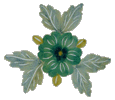
History of Ceramics and the Chianti Area
The Chianti Area
The Chianti is an area of about 300 square kilometres of pure Tuscany. It is positioned centrally between Siena and Florence. A hilly area, its countryside changes from severe to gentle, covered either with regimented rows of vineyards and olive groves or oak woods. On a clear day the light is sharp and the views seem to stretch endlessly. In all this peace and tranquility it is easy to imagine the Chianti as it was in Renaissance times. The countryside is interspersed with castles and magnificent villas, some still owned by the noble families who built them, others abandoned but still dominating the hilltops.
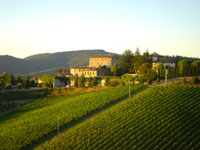 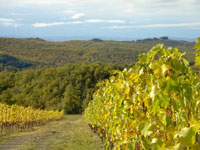 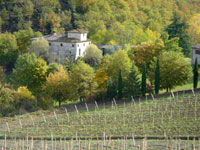  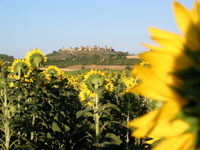 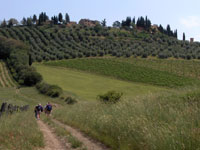 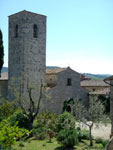 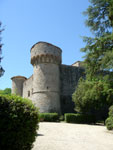 |
The Renaissance
The 15th century in Tuscany, as in many other regions of Italy, was a period of extraordinary cultural and artistic enlightenment. It is in this particular moment of history that the production of ceramics evolved and asserted itself in order to satisfy the requests of the nobility. In particular, we should remember the Medici family, comprising important politicians and merchants, who commissioned special pieces from the best local artisans. Even in the following centuries it was from their workshops that the masterpieces of ceramic art appeared, many of which can still be found today in museums all over the world.
The noble Medici family, who governed Renaissance Florence and much of Tuscany, made an art of living well. They had sets of dishes designed for each of their country villas, virtually inventing the concept of elegant place settings. A hexagonal service plate and a presentation dish for ice-cream were among the Medici innovations, forms which we at Rampini Ceramics reproduce. No sober understatement for the Florentine nobles, but exuberant decorations based on flowers, fruit and foliage. It is these designs which first impassioned the Rampini family. They have also been using patterns derived from the paintings of Arcimboldi, a sixteenth century artist renowned for his allegorical works based on fruit, flowers, vegetables and animals.

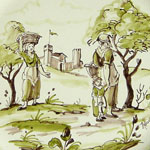
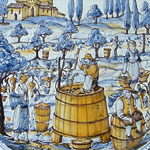
|
Today
The techniques and themes that inspired those of the distant past are alive in our creations today.
Our business is still run at a family level, although we now cooperate with several artists, artisans and co-workers. We have about twenty people working in our studio, from those who glaze and prepare the ceramics for firing, to the painters who so carefully decorate them, as well as the group of people who take care of the sales, quality control, packaging for shipment, administration and customer services.
More History
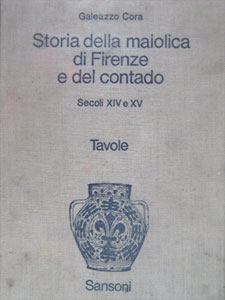 The
many castles and country villas that the noble Florentine families owned
can still be seen in the Chianti. Experts of the Medici period tell us
that while at their country residences, the nobles indulged perhaps even
more than usual in their favourite pastime - eating! Our very popular series
of animals
with which
we paint dinner services and decorative pieces, is inspired by these
long meals and the animals that we depict in this pattern are the animals
most common in our area. An important meal, be it lunch or dinner, usually
consisted of up to twenty courses! Almost every one of these large country
estates had its own ceramics making workshop. On a small scale -
but they were fully equipped with clay, potters, glazing facilities and
painters to decorate all the items and of course, a kiln! It is an extraordinary
thought for us, even in these days of excess, that a private villa would
have its own ceramics factory, but in the sixteenth, seventeenth and eighteenth
century it was reality. This explains why archeologists find many pieces
of ceramics in and around large castles and villas in the Chianti. They
were made - and probably disposed of - there.
The
many castles and country villas that the noble Florentine families owned
can still be seen in the Chianti. Experts of the Medici period tell us
that while at their country residences, the nobles indulged perhaps even
more than usual in their favourite pastime - eating! Our very popular series
of animals
with which
we paint dinner services and decorative pieces, is inspired by these
long meals and the animals that we depict in this pattern are the animals
most common in our area. An important meal, be it lunch or dinner, usually
consisted of up to twenty courses! Almost every one of these large country
estates had its own ceramics making workshop. On a small scale -
but they were fully equipped with clay, potters, glazing facilities and
painters to decorate all the items and of course, a kiln! It is an extraordinary
thought for us, even in these days of excess, that a private villa would
have its own ceramics factory, but in the sixteenth, seventeenth and eighteenth
century it was reality. This explains why archeologists find many pieces
of ceramics in and around large castles and villas in the Chianti. They
were made - and probably disposed of - there.
Many who are interested in ceramics and have been to Florence will have visited the wonderful Palazzo Pitti. It is the place where notorious meals and banquets were served by the Medici family. A curious anecdote is that when the ceramics that these famous meals were served on broke, the broken pieces were thrown into the thirteen wells found in the gardens of the palace (the Boboli gardens). This was done for a very good reason: the broken ceramics served as excellent water filters and kept the water from the wells pure and safe to drink. Giuseppe Rampini, then a young man living in Florence, was already passionate about ceramics. A wealthy Italian Professor, Galeazzo Cora, asked Giuseppe and a friend of his to be daring and lower themselves into the wells found in the Boboli gardens to see if they could retrieve any fragments of these broken plates and dishes. The expedition commenced, and find ceramics they did: many broken plates, platters, bowls and cups! Enough to enable this rich Professor to be imaginative and decorate the walls of his Florence city palazzo, mosaic style, with all these fragments of ceramics. The Professor had become Europe’s biggest collector of Renaissance ceramics and upon his death he left a private collection of around a thousand intact ceramic items to the Italian people.
![]() For further information and to order contact@rampiniceramics.com.
For further information and to order contact@rampiniceramics.com.
Due to the characteristics of monitors the colours in images may vary from the original ceramics pieces.
Copyright © 2009 Rampini Ceramics (all text and images).
